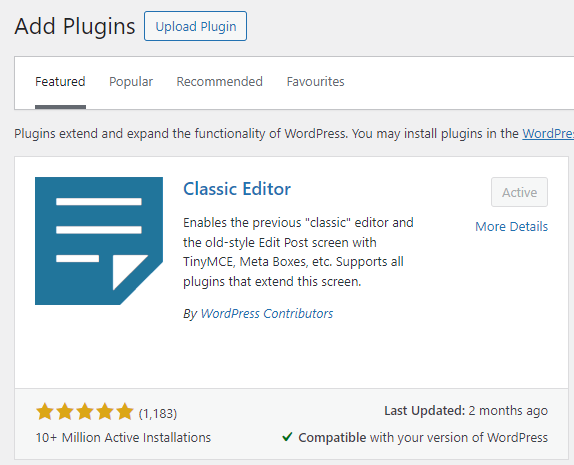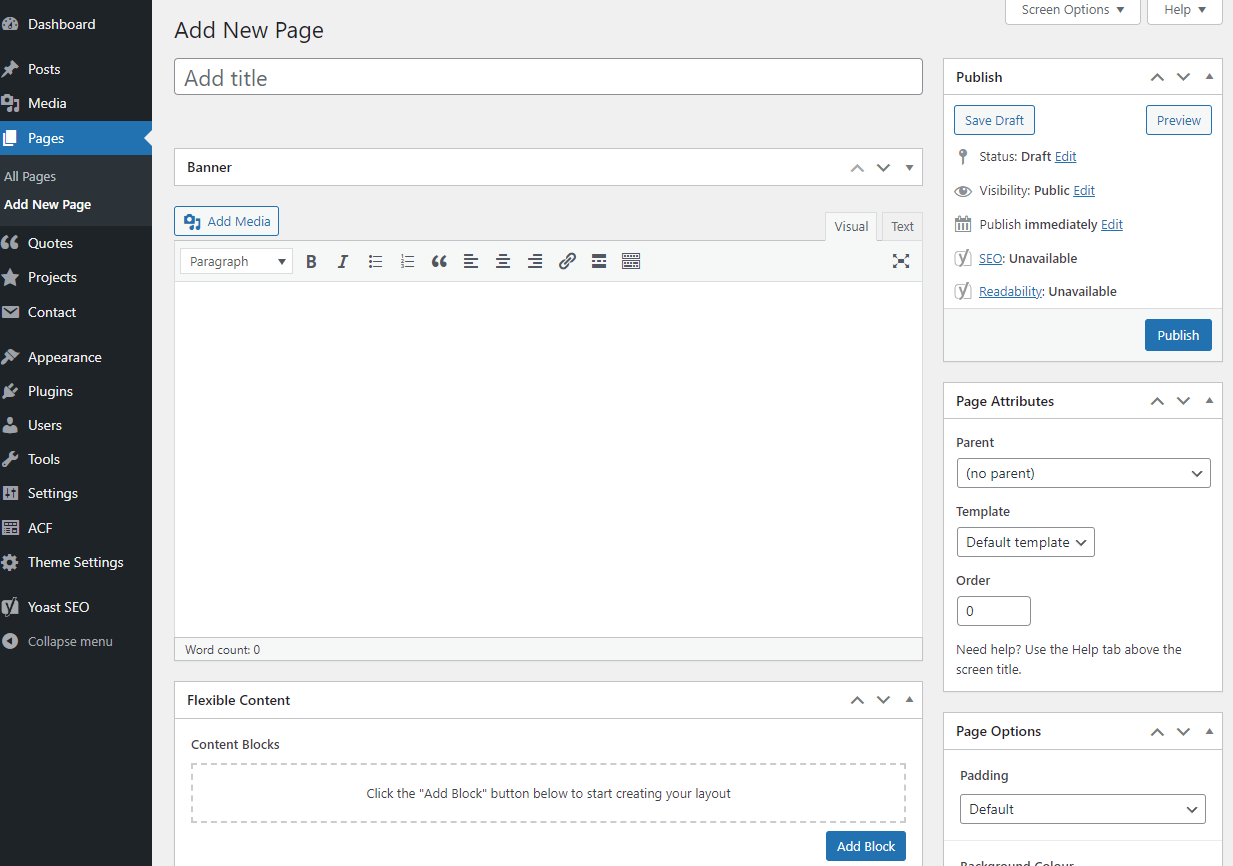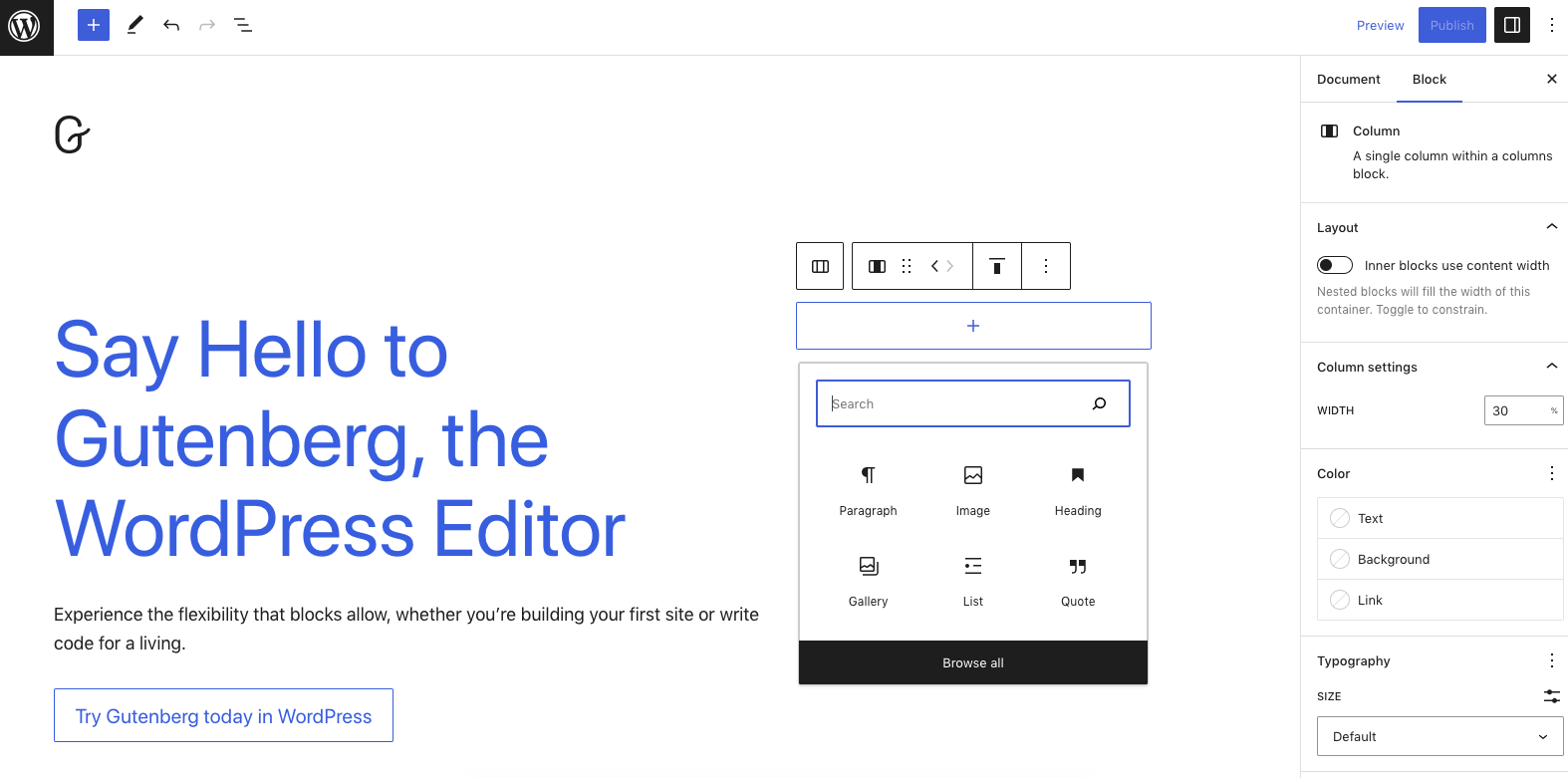Leveraging AI to Supercharge Your WordPress Business Website
In today’s competitive digital landscape, every business website needs an edge to...
17.Sep.2024 | Latest News, Stuff i like, Wordpress
WordPress has come a long way since its humble beginnings in 2003. The platform, once a simple blogging tool, now powers over 40% of all websites on the internet. One of the biggest changes to WordPress arrived in 2018, with the introduction of the Gutenberg Block Editor in WordPress 5.0. It promised a more modern, flexible content creation experience through a block-based approach. However, for many developers and users alike, this change has been more of a step backward than forward.

Despite its wide adoption, a significant portion of the WordPress community still prefers the Classic Editor, particularly when paired with the highly customizable and powerful Advanced Custom Fields (ACF) Pro plugin. In this post, we’ll explore why the Classic Editor is still far superior to the Gutenberg Block Editor from both a developer’s and user’s perspective. We’ll dive into specific examples of negative feedback from the community, explain the issues with Gutenberg, and make a case for why developers continue to gravitate towards the Classic Editor setup.

The Classic Editor is the original WordPress content editor, a simple, intuitive, WYSIWYG (What You See Is What You Get) interface that allows users to create posts and pages easily. It’s loved by developers and users for its simplicity, extensibility, and the control it provides. When paired with ACF Pro, the Classic Editor becomes a highly customizable powerhouse that can handle complex content management with ease.
In contrast, the Gutenberg Block Editor introduced a block-based system where each piece of content, from paragraphs to images to widgets, is treated as a “block.” While this concept may seem promising on the surface, it comes with several downsides that both developers and end-users have found difficult to work with.
One of the main reasons developers love the Classic Editor is the immense control it offers when paired with Advanced Custom Fields (ACF) Pro. ACF Pro allows developers to create custom fields and complex data structures, which can be seamlessly integrated into the Classic Editor. This makes it easier to handle custom post types, taxonomies, and fields, providing a level of control that Gutenberg blocks simply cannot match.
For instance, a developer can create a custom post type for real estate listings using ACF Pro, with specific fields for the property’s price, address, features, and images. The Classic Editor allows all of this to be presented cleanly and intuitively without the clutter of unnecessary blocks. Gutenberg’s block approach, on the other hand, tends to add layers of abstraction that complicate the process and break the fluidity of content creation.
Many developers have built entire workflows around the Classic Editor and ACF Pro. These tools have been around for years, and developers have mastered them to build custom themes and manage complex content structures. With Gutenberg, WordPress essentially forced developers to learn an entirely new system that doesn’t necessarily improve upon the existing one.
Migrating large, custom-built sites from the Classic Editor to Gutenberg can also be time-consuming and expensive. Developers often have to rebuild sections of the site and deal with compatibility issues, which can lead to frustrations for both them and their clients.
With ACF Pro, developers have full control over how content is displayed on the front end. They can use custom PHP templates, integrate third-party plugins, and fine-tune every aspect of the site without the limitations that Gutenberg introduces. ACF fields can be easily added, modified, and displayed anywhere on the site, providing unmatched flexibility.
In contrast, Gutenberg’s reliance on JavaScript and React means that developers must now become proficient in modern JavaScript frameworks to create custom blocks. This not only increases development time but also adds complexity where it may not be necessary. Many developers find it restrictive, especially when they need to create something highly custom that Gutenberg’s block structure can’t easily support.

Gutenberg was designed to make WordPress more accessible to casual users by offering a drag-and-drop block system. However, for developers building custom websites, this system introduces a significant amount of overhead. Each block requires specific markup and often extra CSS or JavaScript to ensure it looks and functions correctly on the front end.
For example, while it may be easy to create a simple text block in Gutenberg, more complex layouts—like a custom product grid or a tailored image gallery—require significant development effort. Many developers have found themselves spending more time configuring Gutenberg to do things that were much simpler with ACF Pro and custom PHP templates.
Gutenberg can also negatively impact website performance. Each block loads its own set of scripts and styles, which can lead to bloated pages and slower load times. For developers who are focused on performance optimization, Gutenberg is a step in the wrong direction.
The Classic Editor, combined with ACF Pro, allows for leaner, more optimized websites. Developers have complete control over what scripts and styles are enqueued, allowing them to eliminate unnecessary bloat and improve site speed.
One of the most significant criticisms of Gutenberg is its poor backward compatibility with themes and plugins that were developed with the Classic Editor in mind. Many websites that were built using ACF Pro and the Classic Editor have run into issues when trying to switch to Gutenberg. Custom fields, layouts, and plugins often don’t work as expected, forcing developers to rewrite large portions of the site.
Developers who have built long-term relationships with clients are often hesitant to adopt Gutenberg because of the potential for breakage and the associated costs of fixing compatibility issues.
For many users, the Classic Editor is far simpler to use. It functions much like a word processor, with a straightforward interface for adding and editing content. Users can quickly add text, images, and media without having to navigate through a sea of blocks.
Gutenberg, on the other hand, introduces a significant learning curve. While the block-based approach may seem intuitive at first, many users struggle to find the blocks they need, and often get overwhelmed by the plethora of options. Simple tasks like formatting text or inserting images can become more cumbersome than necessary.
One of the main complaints about Gutenberg is that it breaks the natural flow of writing. Instead of focusing on the content, users are forced to think in terms of blocks, which can be distracting and unintuitive. For example, adding a simple list or blockquote in Gutenberg requires navigating through block options, whereas the Classic Editor handles it in a single click.
The WordPress plugin repository is filled with negative reviews of Gutenberg. Here are a few real-world examples:
These kinds of reviews are not uncommon. Many long-time users of WordPress feel that Gutenberg has been a hindrance rather than a help.
While Gutenberg may work well for some users, particularly those who are new to WordPress or prefer a visual, block-based approach, it simply does not hold up for developers who value control, flexibility, and performance. The Classic Editor, when paired with ACF Pro, continues to be the go-to solution for many custom WordPress development projects.
For developers, the familiarity, speed, and flexibility of the Classic Editor make it a superior choice. Users, especially those who are not as tech-savvy, also benefit from the simplicity and ease of use that the Classic Editor provides. Gutenberg’s added complexity, steep learning curve, and performance issues make it a less attractive option for many WordPress professionals and clients alike.
Ultimately, the choice between the Classic Editor and Gutenberg comes down to the needs of the project and the preferences of the developers and users involved. However, for those seeking a streamlined, efficient, and customizable content management experience, the Classic Editor with ACF Pro remains the gold standard in WordPress development.
By opting for the Classic Editor and ACF Pro, you ensure that your WordPress site remains performant, user-friendly, and adaptable—qualities that will always be in demand, regardless of how much WordPress evolves.
ACF, Coding Tips, Search Engine Optimisation, Wordpress, WordPress Tips
Share

In today’s competitive digital landscape, every business website needs an edge to...

In the ever-evolving landscape of website development, staying ahead of the curve...

In the digital realm, your website serves as the cornerstone of your...
A quick way to manually disable the WordPress emojicons code without needing a plugin. Pop this in your functions.php file:...
For me, the ACF plugin is a standard install for every WordPress project. Its a great tool for developers to...
In the digital realm, your website serves as the cornerstone of your online presence. It's not merely a virtual space;...




